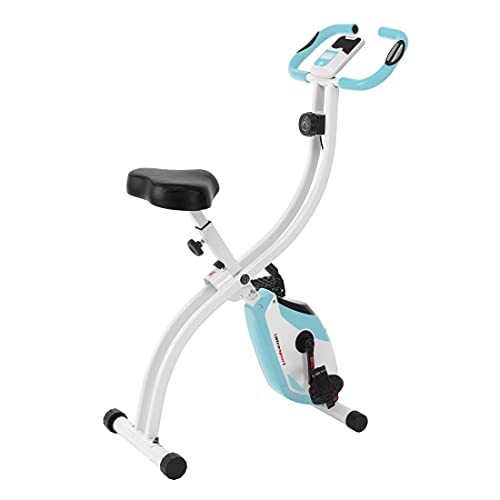In an era where maintaining fitness and health is paramount, finding the right exercise equipment to complement a busy lifestyle is crucial. Among the most popular and versatile options is the exercise bicycle, a low-impact, joint-friendly piece of machinery that can be used for both cardio and strength training. This guide aims to provide a detailed overview of what constitutes a good exercise bicycle, helping readers make an informed decision when selecting one for their home gym or fitness routine.
Understanding the Basics of Exercise Bicycles
An exercise bicycle, also known as a stationary bike, is a device that simulates the action of riding a bicycle while allowing users to stay in one place. These bikes are designed to help with cardiovascular exercise, improve leg strength, and burn calories without the wear and tear that can come from running or other high-impact activities. There are two main types of exercise bicycles: upright and recumbent.

Upright Bicycles
- Design: Resembles a traditional road bike, with a more upright posture and a smaller seat.
- Benefits: Excellent for those who want a more intense workout and prefer a position similar to outdoor cycling.
- Ideal For: Cyclists, individuals looking to improve their leg strength and cardiovascular health.
Recumbent Bicycles
- Design: Features a larger, reclined seat and a horizontal backrest, placing the rider in a laid-back position.
- Benefits: Provides better support for the back and puts less strain on the knees, making it ideal for individuals with joint issues or those who prefer a more comfortable ride.
- Ideal For: Seniors, individuals with back or knee problems, and those recovering from injuries.
Key Features to Consider
When shopping for an exercise bicycle, several key features can make a significant difference in the quality and effectiveness of your workouts. Here are some essential elements to look for:
Resistance Types
- Magnetic Resistance: Utilizes magnets to create resistance, offering smooth and quiet operation.
- Fan Resistance: Uses a fan to generate air resistance, providing a more realistic cycling feel.
- Eddy Current Resistance: Combines magnetic and mechanical resistance for a dynamic workout experience.
- Manual Resistance: Adjustable via a knob or lever, suitable for basic workouts.
Adjustability
- Seat Adjustments: Ensure the seat can be adjusted to fit your height and comfort level.
- Handlebar Adjustments: Adjustable handlebars can accommodate different riding positions and preferences.
- Resistance Levels: A good exercise bike should offer a wide range of resistance levels to cater to various fitness goals.
Display and Programs
- LCD Screen: Look for a bike with a clear and easy-to-read display that shows important metrics like speed, distance, time, and calories burned.
- Pre-Set Workouts: Many bikes come with pre-programmed workouts that can help keep your routine varied and engaging.
- Connectivity: Some advanced models offer connectivity with fitness apps and platforms, allowing for tracking and analysis of your progress.
Build Quality and Durability
- Frame Material: A sturdy frame made of steel or aluminum ensures the bike can withstand regular use.
- Weight Capacity: Check the weight capacity to ensure it can support your body weight and any additional weight you might add.
- Assembly: Some bikes require minimal assembly, while others may need more setup. Consider your comfort level with DIY tasks.
Comfort and ergonomics
- Seat Padding: A well-padded seat can make long rides more comfortable.
- Handlebar Grips: Ergonomically designed grips can prevent hand fatigue and enhance grip.
- Foot Pedals: Look for pedals with straps or cages to keep your feet in place and provide stability.
Noise Level
- Quiet Operation: Magnetic resistance bikes are generally quieter than fan resistance bikes, which can be noisy due to the air flow.
- Silent Pedals: Ensure the pedals operate smoothly and quietly to avoid disrupting your workout or others around you.
Additional Features
- Heart Rate Monitor: Some bikes come with built-in heart rate monitors or provide options to connect external devices.
- Fan and Speakers: Integrated fans and speakers can enhance your workout experience and make it more enjoyable.
- Transport Wheels: For easy mobility, especially if you need to move the bike frequently.
Top Recommendations
Peloton Bike
- Type: Upright
- Features: Live and on-demand classes, high-quality LCD screen, magnetic resistance, and a robust community.
- Price Point: High
- Best For: Enthusiasts who enjoy group classes and want a premium experience.
Schwinn IC4
- Type: Upright
- Features: Bluetooth connectivity, adjustable resistance, and a large, high-resolution touchscreen.
- Price Point: Mid-range
- Best For: Tech-savvy individuals and those who want a versatile, connected workout experience.
NordicTrack Commercial S22i Studio Cycle
- Type: Upright
- Features: Interactive 22-inch HD touchscreen, iFit live classes, and a wide range of resistance levels.
- Price Point: High
- Best For: Users who want an immersive, studio-like experience at home.
ProForm Power 8.0 Recumbent Bike
- Type: Recumbent
- Features: 26 resistance levels, 10 pre-set workouts, and a comfortable, reclined seat.
- Price Point: Mid-range
- Best For: Individuals with back or knee issues and those looking for a comfortable, low-impact ride.
Bowflex C6 Smart Bike
- Type: Upright
- Features: 10.1-inch HD touchscreen, 10 resistance levels, and Bluetooth connectivity for tracking.
- Price Point: Mid-range
- Best For: Users who want a balance of technology and affordability.
FAQs
What is the best exercise bicycle for beginners?
- For beginners, a recumbent bike is often recommended due to its comfortable seating and low-impact nature. Models like the ProForm Power 8.0 Recumbent Bike offer a gentle introduction to cycling workouts.
Are exercise bicycles good for weight loss?
- Yes, exercise bicycles are excellent for weight loss. They provide low-impact cardio that can help burn calories and improve metabolism. Upright bikes, with their more intense workouts, can be particularly effective.
Can I use an exercise bicycle if I have knee problems?
- Recumbent bikes are a better choice for individuals with knee problems as they put less strain on the joints. Models with adjustable resistance and smooth operation, such as the ProForm Power 8.0 Recumbent Bike, are ideal.
How often should I use an exercise bicycle?
- For optimal results, aim to use an exercise bicycle 3-5 times a week. However, it's important to listen to your body and adjust the frequency based on your fitness level and goals.
Can I connect my exercise bicycle to fitness apps?
- Many modern exercise bicycles come with Bluetooth connectivity, allowing you to sync with popular fitness apps like Strava, MyFitnessPal, and others. Check the bike's specifications to ensure it supports your preferred apps.
How do I maintain my exercise bicycle?
- Regular maintenance includes cleaning the bike, lubricating the chain (if applicable), and checking the tightness of bolts and screws. Refer to the owner’s manual for specific maintenance instructions.
Conclusion
Choosing the right exercise bicycle is a crucial step in your fitness journey. Whether you opt for an upright or recumbent bike, consider the key features such as resistance type, adjustability, and build quality to ensure you get the most out of your workouts. With the right equipment and a consistent routine, you can achieve your fitness goals and maintain a healthy lifestyle. Remember, the best exercise bicycle is the one that fits your needs, preferences, and budget.
By following this guide, you can make an informed decision and find the perfect exercise bicycle to support your fitness routine. Happy cycling!







